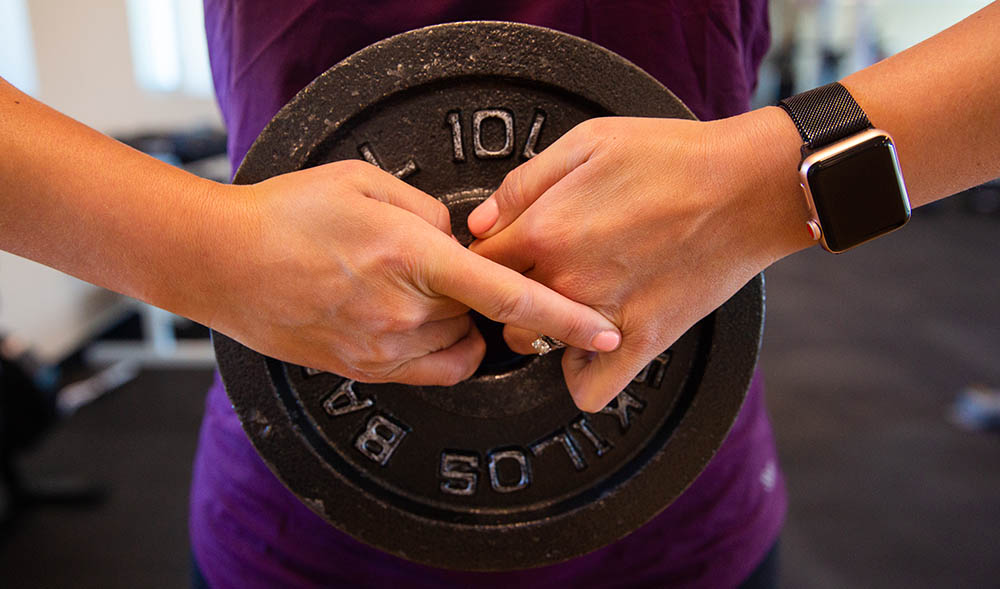After giving birth, working out may be the last thing on your mind. Even moms who made exercise a priority before pregnancy may find that their fitness routine takes a backseat when their new baby arrives.
But just as physical activity is important during pregnancy, it's also key for postpartum wellness. Exercise can give you a huge boost in not just physical but also mental health.
Regular exercise after pregnancy can:
- Help you lose the weight you gained during pregnancy
- Strengthen abdominal muscles that were stretched during pregnancy
- Prevent and reduce bladder leakage
- Boost your energy
- Help you sleep better
- Relieve stress
- Reduce symptoms of postpartum depression
And as an added bonus, you’re also helping your baby as they grow up by setting an early positive example of a healthy lifestyle.
One note: Breastfeeding burns a lot of calories, but you still need to get additional physical activity. Don’t worry, exercise won’t affect the quality or quantity of your breastmilk.
Related reading: 5 Fun, Pregnancy-Safe Exercises That Can Benefit Mom and Baby

How Soon Can I Start Exercising?
Your body has gone through big changes—not to mention childbirth—and it needs time to heal. Every mom recovers from childbirth at their own pace. There are no hard and fast rules. When you can start to exercise depends on how your body feels, what type of birth you had, whether there were complications, and your fitness level pre-pregnancy and pre-delivery.
Many Ob/Gyns and midwives recommend waiting at least six weeks before starting any exercise more strenuous than walking. However, you may be able to get moving sooner in certain situations.
- Vaginal delivery without complications: Your doctor may allow you to begin modified exercises shortly after birth if you feel ready. Start slow and increase intensity as you feel comfortable doing so.
- Vaginal delivery with complications such as tearing: It can take a couple weeks to a month for an extensive tear to heal. You may need to limit yourself to walking and upper body exercises.
- C-section: You just had major surgery, so you need to wait at least six weeks for your body to heal sufficiently to start exercising. However, walking is good for you and can promote healing after a C-section.
Above all, pay attention to your body and follow its cues. If you experience abdominal or vaginal pain, bleeding, or other fluid leakage, check with your health care provider.
Getting Started with Postpartum Exercise
Once your health care provider gives you the green light to exercise, start slow and simple. Those hormones that made your joints and ligaments loose to accommodate your growing baby during pregnancy can linger for a few months after birth, increasing the risk of injury. Your abdominal muscles may have separated during pregnancy and will need some extra attention in order to avoid back pain and injury.
An easy and low-impact option to start with is a daily walk. Walking also allows flexibility in that you can do it alone or with your baby. If you plan to use a jogging stroller, check with your baby’s pediatrician and the stroller’s manufacturer about when your little one can safely join you on a run. Most babies aren’t ready until they are six to eight months old.
Try some simple, functional exercises you can build on. These can include single-arm rows with a light weight, push-ups (against the wall, on your knees, or on your toes), squats, and lunges.
Many places offer postpartum or mommy-and-me workout classes that teach you modified exercises. It also allows for camaraderie between new moms!
If you were a workout warrior before pregnancy—such as a devoted runner, cyclist, high-intensity interval training (HIIT), or CrossFit regular—talk to your health care provider about when you can begin these activities and scaling them up to pre-pregnancy effort. Again, listen to your body. It will tell you when it’s ready for more.
Strengthening Your Abs
There is one part of your body that will need extra love after giving birth: your abdominal muscles. Up to 60% of women have diastasis recti six weeks after giving birth. Diastasis recti is a gap between your right and left abdominal wall muscles. It’s common during and after pregnancy because the uterus stretches the muscles in the abdomen to make room for your growing baby.
Diastasis recti can cause your belly to stick out. You might call it a “pooch.” But it’s not just a cosmetic problem. Diastasis recti also can make movement difficult, lead to lower back pain, and in extreme cases, a hernia.
One easy exercise you can start a few days after giving birth to help strengthen the abdominal muscles and lower back is diaphragmatic breathing, or “drawing in.” You can do this exercise while sitting cross-legged or on your knees, standing, or on all fours. No matter what position you are in, make sure your back is flat.
Place your hands on your stomach and take a deep breath, filling your belly with air. Exhale and pull the belly back toward the spine, holding it there. While keeping the belly flat, take small breaths without stopping for two to three minutes. If you need to release the tension in the belly early, take a full deep breath and restart the process.
More advanced exercises you can work up to include cat/cow, kneeling leg and arm extensions, single leg lifts, and wall sits. Some exercises to avoid if you have diastasis recti include crunches, sit-ups, pushups, and planks.
Strengthening Your Pelvic Floor
Your pelvic floor muscles support your pelvic organs (bladder, uterus, cervix, vagina, and rectum) and control your bladder and bowel movements. These muscles have supported the weight of your growing baby throughout pregnancy. Pregnancy hormones also have loosened the ligaments that help you hold in urine.
While one in three women experience involuntary loss of urine (urinary incontinence) in the first three months after giving birth, peeing a bit when you sneeze, laugh, or jump should not be just be accepted as normal after giving birth. Don’t let anyone tell you it is. There are things you can do to prevent and reduce incontinence.
One of the easiest things you can do to strengthen your pelvic floor muscles is Kegel exercises. First you need to identify your pelvic floor muscles. Imagine stopping peeing midstream and avoiding passing gas at the same time. You shouldn’t be clenching your butt, stomach, or leg muscles. Once you do this, contract your pelvic floor muscles for three to five seconds. Then relax them for three to five seconds. Repeat the cycle 10 times three times a day.
If your incontinence does not go away, talk to your health care provider. They may recommend seeing a physical therapist or urogynecologist to discuss alternate exercises, lifestyle modifications, or treatments.
Moms spend much of their lives taking care of other people. But it’s important that they also take care of themselves. Exercise provides an outlet to focus on yourself and your health. And physical activity after pregnancy and childbirth can help the body heal and improve your mood, sleep, and stress levels.
Questions? Looking for guidance? Please reach out to us! Call 505-272-2245 today to request an appointment.

